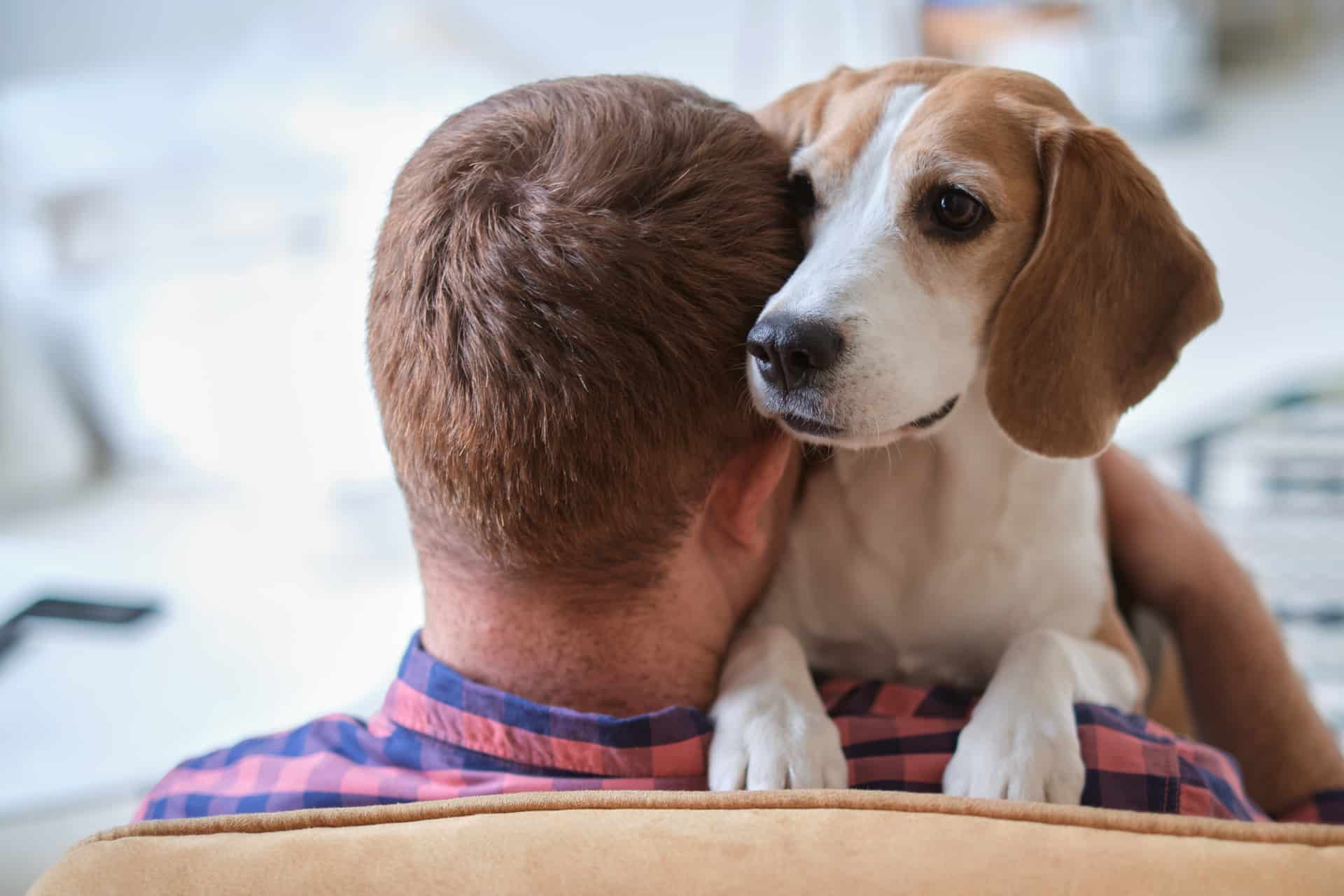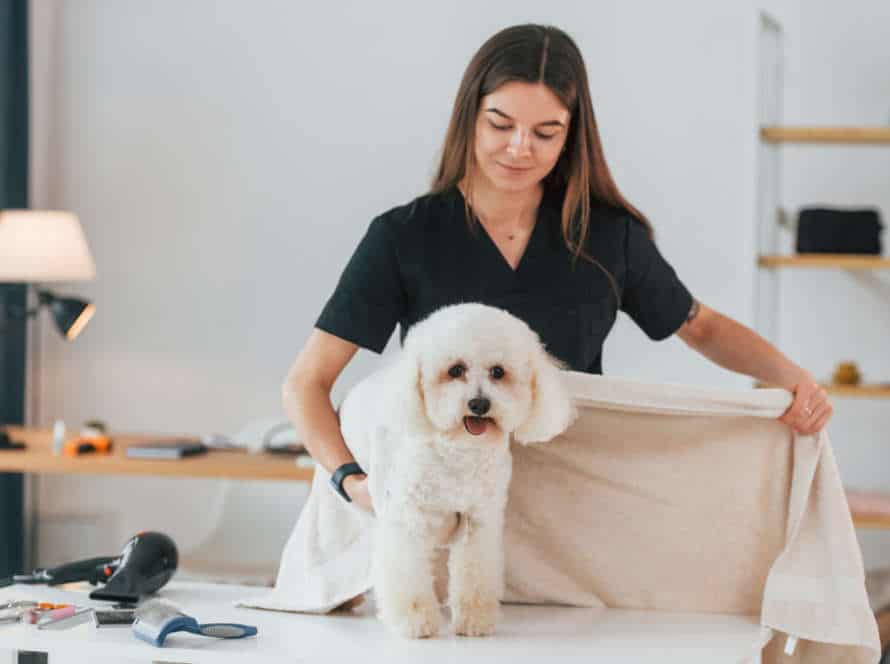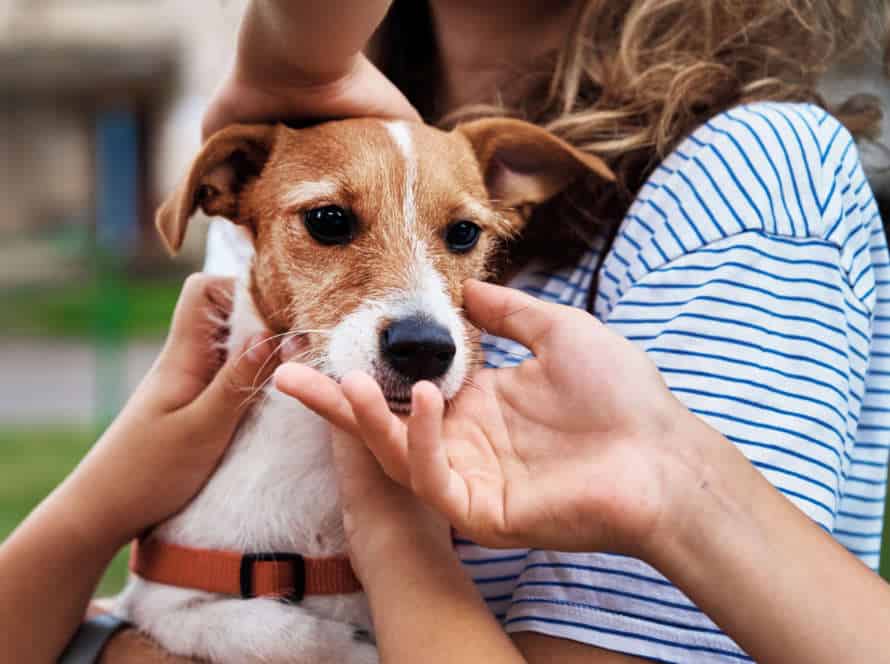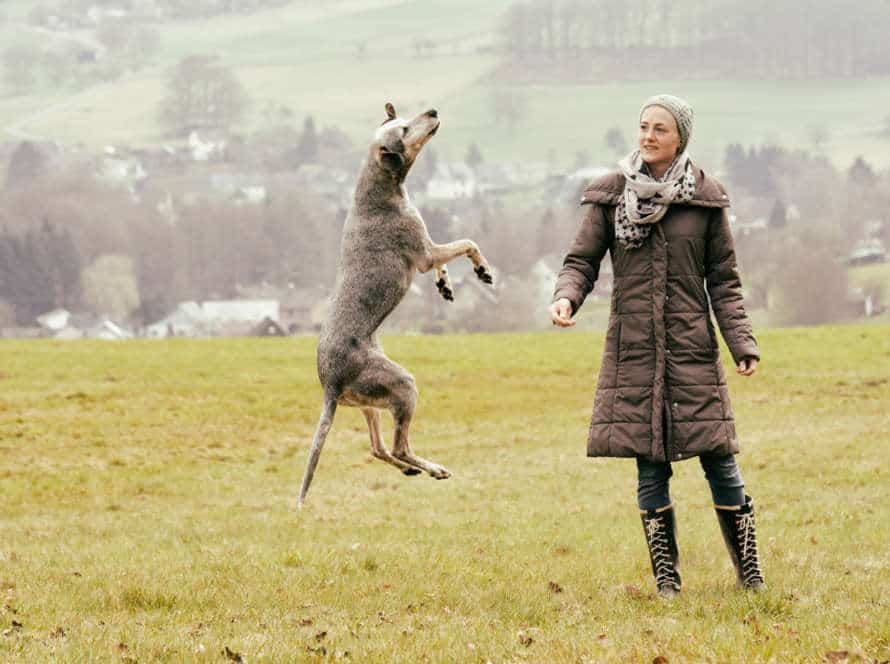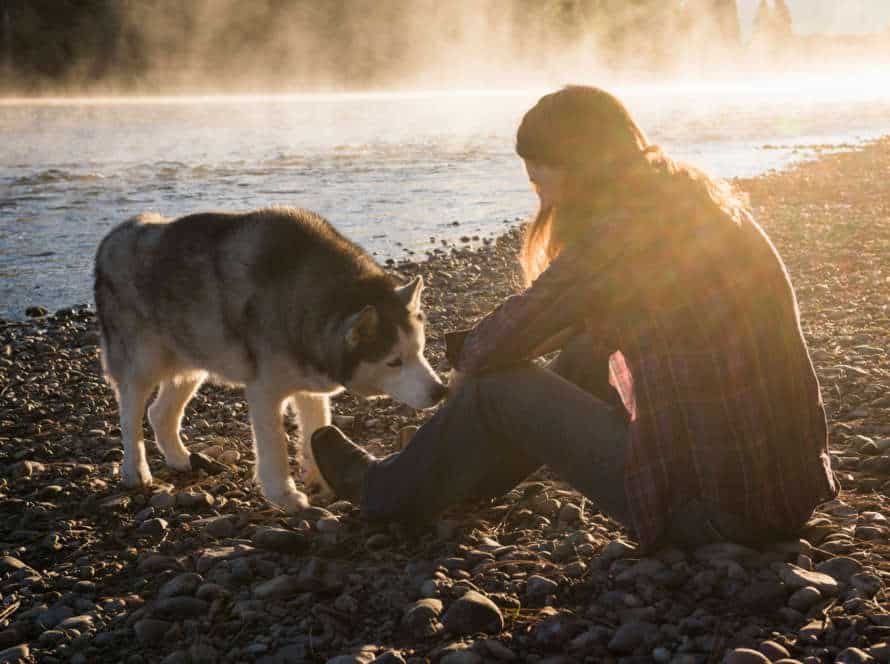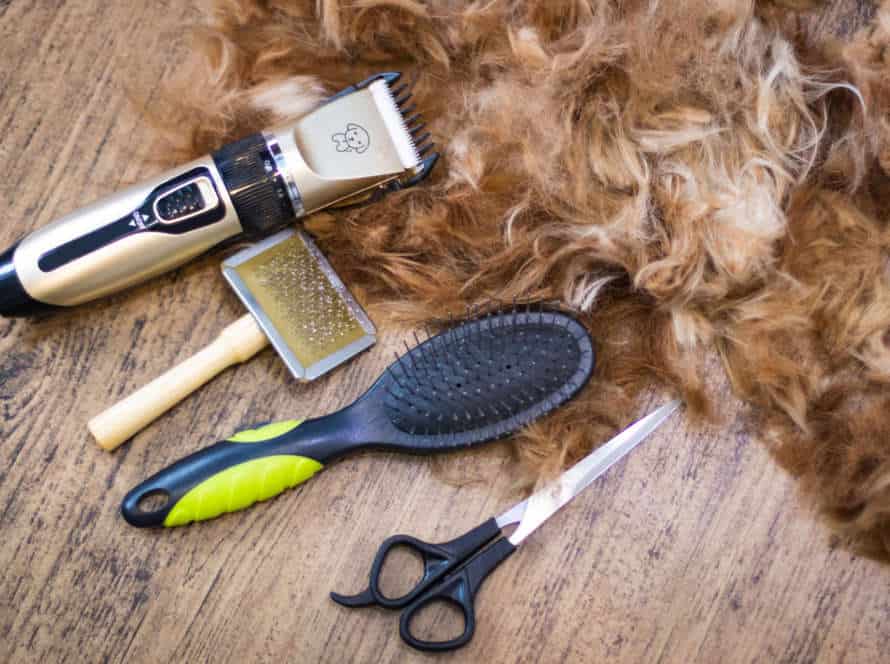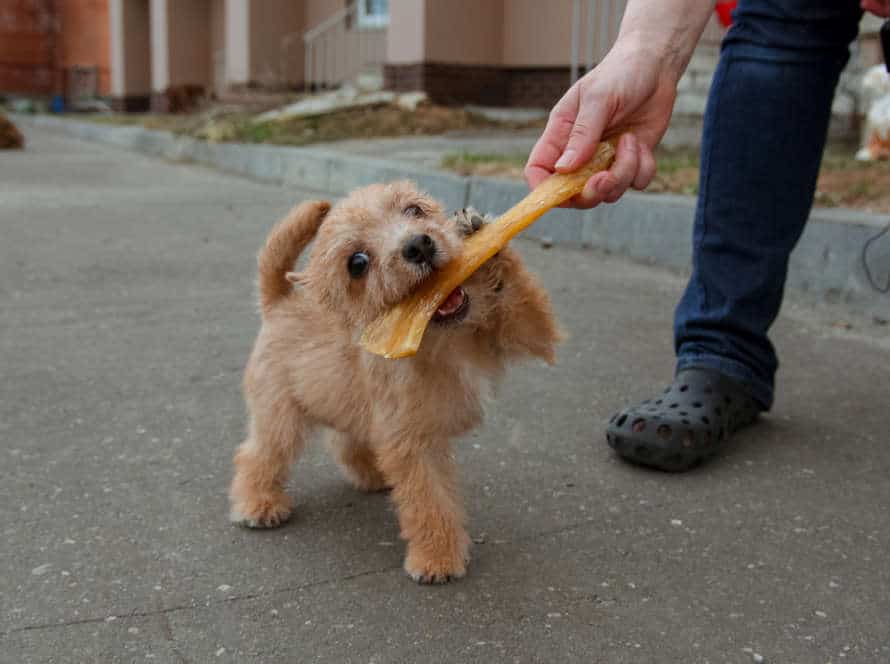Dog Trust 101: Foundational Steps for a Strong Relationship
Forging a strong bond with your pup involves several steps. To help you make a strong, meaningful connection with your dog, here are some tips:
- Devote quality time with your dog via playtime and daily walks. This encourages a closer connection and exercises their physical and mental skills.
- Utilize positive reinforcement training to support good behavior and manage bad habits in a humane manner.
- Hold steadfast to the rules and training to avoid perplexity and unease in your pup.
- Provide your pup with a secure and pleasant home that serves their physical and emotional needs.
- Display love and fondness through petting, grooming, and rewards. This will reinforce positive behavior and foster trust.
Pro tip: Crafting a strong relationship with your pup requires commitment, patience and effort. Remain consistent, kind and communicative to make a lasting bond.
Understanding Your Dog’s Needs
Constructing a solid relationship with your pup begins with comprehension their prerequisites and how to cover them. It’s significant to recognize that all dogs are unique, so there will be various approaches to satisfy their needs. Nevertheless, some of the needs which all dogs possess include:
- Physical and Mental stimulation to help them stay active and alert.
- Consistent rules to follow and understand boundaries.
- Lots of love to keep them happy and feeling secure.
Let’s investigate each of these needs more thoroughly.
Determine your dog’s breed and characteristics
Discovering your pup’s breed and qualities is vital for making a solid bond and comprehending the particular necessities of your pet. Here are a few hints to follow:
- Do a DNA test: This will precisely recognize the breed or breeds of your canine and give knowledge into their conduct attributes and potential wellbeing dangers.
- Inspect physical characteristics: Notice your dog’s size, coat type and body shape to figure out which breed group they have a place with.
- Think about conduct and temper: Knowing your dog’s breed can help foresee their conduct, teachability, and exercise needs.
- Consult an expert: Vets or creature conduct specialists can give custom-made guidance on the best way to deal with your specific breed and address their remarkable needs.
Comprehending your dog’s breed and qualities is a fundamental advance towards making a solid and sound relationship with your pet.
Learn about your dog’s basic needs for health and happiness
Maintaining the health and cheer of your pup is important. Here are their essential needs that must be met daily:
- Give them a balanced, nourishing meal that fits their breed, age and activity level.
- Exercise them regularly, to keep them at a healthy weight and prevent behavioral issues.
- Groom, clean ears, teeth and pick up after them.
- Stimulate them mentally with walks, play, training and socializing with other dogs.
- Offer them fresh water all the time.
By attending to their needs, you can create a strong bond with your beloved pet.
Pay attention to your dog’s unique personality traits
Having a robust and healthy relationship with your pooch is key. Focus on their individual personality traits and recognize their special needs. Every doggie is different, owning their own exclusive preferences and habits.
Some may dig stillness and being alone, whereas others flourish on being social and active. By watching your pup and how they behave, you can acquire knowledge of their likes and dislikes, talents and flaws, and all-round nature.
For instance, if your doggy is timorous or uneasy around strangers, it’s essential to treat them with kindness and forbearance, rather than attempting to push them into situations that make them uneasy.
By being conscious of your pup’s particular personality traits, you can form a solid bond of trust and admiration which will help you communicate effectively and relish many wonderful years together.
Communicating with Your Dog
Having a strong bond with your pup is key. Comprehending them, and understanding how to communicate with them is essential. Here is a guide to the various techniques you can use to talk to your pooch. Learn more about it now!
Learn to read your dog’s body language
Grasping your pup’s body language is essential for forming a robust connexion based on faith and useful communication.
Here are some customary body language signs and what they mean:
- Tail wagging: Not like what is usually thought, a swaying tail does not always signify a satisfied dog. A tall wag suggests thrill, whereas a low wag could signify fear or hostility.
- Eye contact: Straight eye contact might be viewed as a menace, whereas averted eyes could indicate worry or evasion.
- Ears: Upright ears display alertness, whereas flattened ears could point to fear, aggression, or submission.
- Body: A loose, relaxed body denotes serenity and amiability, while a stiff, tense body might denote aggression, fear, or distress.
By recognizing your dog’s body language, you can respond suitably to their desires and feelings, reinforcing your bond and reliance with them. Professional tip: Always move towards unfamiliar pooches slowly and carefully, and request their owner’s permission before petting them.
Establish clear communication through training and positive reinforcement
Establishing clear communication with your pup is essential for creating a strong bond of trust and respect. This can be done with training and positive reinforcement techniques that reward good behavior. Here are some tips to help you:
- Consistency: Use the same verbal and physical signals to let your dog know what you want.
- Reinforcement: Give treats or praise to reward good behavior and motivate your pup to keep doing it.
- Patience: Be patient with your pup, especially during training. It may take time for them to understand what you want.
- Body language: Notice your pup’s body language and use your own to talk to them.
By employing these techniques, you can improve communication with your pup and build a strong relationship.
Create a consistent routine to build trust and reduce stress
A steady routine is a must for gaining trust and lessening stress when talking with your dog. Dogs are creatures of habit, and a regular routine will give them a sense of predictability and structure, making them feel secure.
Here are some basics for a good relationship with your four-legged friend:
- Schedule regular meal times and never miss them.
- Walk your dog daily and keep the same route.
- Train your pooch with positive reinforcement to make boundaries and expectations clear.
- Play with your dog daily to enhance the bond and get rid of extra energy.
- Be persistent and patient – creating trust needs time and effort, but it is worth it.
Building Trust and Respect
Creating trust and respect between you and your dog is a vital step for a strong, lasting bond. This relationship is based on mutual comprehension, talking, and constancy.
In this segment, we’ll discuss the basics to form a dependable union with your pup.
Establish yourself as a leader through confidence and consistency
Becoming a leader for your pup is key for a trusting and respectful relationship. Confidence and consistency are the basics for this aim. Here’s how you can do it:
- Show self-assurance when with your pup. Use a commanding voice and body language, and make eye contact to demonstrate your strength.
- Be steady in your disciplining and connection with your pup. Set boundaries and rules and apply them constantly. Do not give unclear messages or keep changing the rules as this will confuse your pup and weaken their trust in you.
- Give positive reinforcement and rewards to reward good behavior and discourage wrong habits. Consistently rewarding good behavior will strengthen your leadership position and build your pup’s trust and respect for you.
Remember: Gaining trust and respect from your pup takes patience and effort. It is important to be consistent and diligent in your attempts, for the best results in the long run.
Build trust through loving and kind interactions
Developing trust with your pup is key in forming a strong and respectful bond. One awesome way to create it is by being loving and nice.
These are some ideas for establishing trust:
- Utilize positive reinforcement to promote good behavior. Give treats or compliments when they do something right.
- Be consistent with your training strategies. Utilize the same instructions and rewards always to help them learn faster.
- Show your dog love through physical touch, like petting and hugging, to make them feel cared for.
- Spend quality time with your pup, taking part in activities they like, like playing fetch or going for walks.
- Always be patient and understanding when they make mistakes. Use mistakes as a chance to teach and strengthen proper behavior.
Remember, building trust requires time and effort, but the reward is a solid and respectful relationship with your furry companion. Extra pointer: Begin constructing trust from the moment you bring your pup home and continue building it every day to ensure a successful and content partnership.
Use positive discipline techniques to maintain respect and boundaries
Positive discipline is the key to building trust and respect with your pup. These techniques can help:
- Positive reinforcement – reward them with treats, praise, or play when they do something good!
- Timeouts – this gentle way stops negative behavior and redirects their focus.
- Redirecting – instead of punishing, move them to an activity or toy more suitable.
- Consistency – stick to rules and routines to reinforce positive discipline.
Patience, consistency, and positive reinforcement will help you have a healthy relationship with your furry friend. Pro Tip – watch their body language and vocal cues to know their stress levels and comfort.
Strengthening the Bond
Creating a strong bond between you and your pup is critical. To do this, you should comprehend their behavior, talk to them properly, and teach them regularly. Acknowledge the individuality of your pet and use these tactics to form a trusting relationship. Here are some basics to bettering your connection with your dog:
- Comprehend your pup’s behavior
- Talk to them properly
- Teach them regularly
Spend quality time with your dog through play, exercise, and socialization
Spending quality time with your pup? Here’s how to build a strong bond:
- Playtime! Stimulate natural instincts with fetch, tug-of-war & hide-and-seek. This helps burn off energy & stay active.
- Exercise! Take daily walks or runs to explore the environment & interact with new sights, smells & sounds. This benefits both physically & mentally.
- Socialization! Introduce your dog to other dogs & humans in a safe environment. This improves confidence & responsiveness to commands.
Show your dog affection through physical touch and praise
Physical touch and praise are great ways to show your pup love and build your bond. Here’s how:
Touch:
- Petting: Give your dog’s head, back and tummy a stroke.
- Belly rubs: Lie or sit with your pup and give them a belly rub.
- Massage: Knead their muscles and joints for improved circulation and relaxation.
Praise:
- Verbal praise: Use a happy, high-pitched tone to show your appreciation.
- Treats: Reward desirable behavior with healthy treats and praise.
- Playtime: Spend time playing and training together regularly.
Pro tip: Respect your dog’s personal space. Never force them into anything.
Pay attention to your dog’s preferences and interests to strengthen the bond
Dogs are social animals and they love being around humans who understand them. Pay attention to your pup’s body language and behavior to build a strong bond. Here’s how:
- Observe your dog when they’re happy, relaxed, or anxious.
- Reward good behavior with treats, praises, or play.
- Don’t punish them for bad behavior.
- Set aside time for play and exercise each day.
- Try new activities like hiking, swimming, or teaching them new tricks.
- Be patient, consistent, and calm in your interactions with your dog.
- Remember, every pup is unique. Pay attention to their preferences, respect their boundaries, and enjoy building your relationship!
Troubleshooting Issues
Creating a bond with your pup is fulfilling! But, our relationship with our four-legged friends can be tricky. So, let’s look at some tips to help out. Fixing the issues between you and your dog can make your relationship the best it can be.
Address problem behaviors through positive reinforcement and consistency
Addressing problem behaviors in dogs? It needs positive reinforcement and consistency. Here are tips to help:
- Positive reinforcement: Praise and reward good behavior, it makes your dog want to do it again. Punishment or scolding can cause fear and anxiety, making the problem worse.
- Consistency: Dogs need routine and consistency. Set rules and reinforce them consistently. Inconsistency confuses your dog, leading to more problems.
- Identify the cause: Figure out the source of the problem. Is your dog bored, anxious, or seeking attention? Addressing the issue can help.
- Seek help: A professional dog trainer or behaviorist may be needed.
Patience and consistency are key. Positive reinforcement and understanding the source of the problem help build a strong bond with your pet.
Seek professional help when needed for more challenging issues
Creating a strong relationship with your pup needs persistence, being consistent, and being willing to get help from a pro if needed for more complicated issues. Resolving issues with your dog can be difficult, however, with the correct strategy, you can overcome them and make your connection stronger. Here are a few basic steps to follow:
- Have rules and standards: Consistency is major when training your pup. Set regulations and expectations, and back them up with positive reinforcement and rewards.
- Give plenty of activity and mental exercise: Dogs need lots of physical activity and mental stimulation to do well. Make sure your pup has lots of playtime and access to toys and puzzles to challenge their brain.
- Get help from a pro if needed: If your pup is showing negative behavior even after your efforts, get the help of a professional trainer or behaviorist. They can give you personalized advice and assistance customized to tackle your particular issues.
Show patience and understanding in times of difficulty to maintain trust and respect.
As a dog parent, it is key to be patient and understanding when you face issues. Doing this helps to establish trust and respect between you and your pup.
If your pooch is behaving badly, for example chewing furniture or barking too much, here’s what you can do:
- First, try to identify what causes the behavior. Is your pup feeling anxious, bored or need more exercise?
- Second, give your dog the help they require. This might mean teaching them crate training or providing more playtime and physical activities.
- Lastly, be patient and understanding. Reward them with positive reinforcement and avoid punishing them.
Remember, it takes time and effort to build trust and respect with your pup, but it is well worth it!
Frequently Asked Questions
1. What are some foundational steps for building a strong relationship with my dog?
Establishing trust, setting boundaries, providing consistent training, and showing affection are foundational steps for building a strong relationship with your dog.
2. How can I establish trust with my dog?
Establish trust with your dog by showing consistency, being patient, and observing your dog’s behavior. Creating a predictable routine and providing positive reinforcement can also help build trust.
3. How important is training for building a strong relationship with my dog?
Training is essential for building a strong and healthy relationship with your dog. It establishes mutual understanding and communication between you and your dog, builds confidence in your dog, and encourages positive behavior.
4. Is regular exercise important for building a strong relationship with my dog?
Yes, regular exercise is important for building a strong relationship with your dog. Exercise helps to release pent-up energy, strengthens the bond between you and your dog, and provides mental stimulation.
5. How can I show affection to my dog?
You can show affection to your dog by giving them plenty of attention, affection, and praise. Providing regular grooming and playtime can also help strengthen the bond between you and your dog.
6. What should I do if I am having trouble building a strong relationship with my dog?
If you are having trouble building a strong relationship with your dog, seek advice from a professional trainer or behaviorist. They can provide guidance on how to overcome obstacles and improve communication with your dog.

